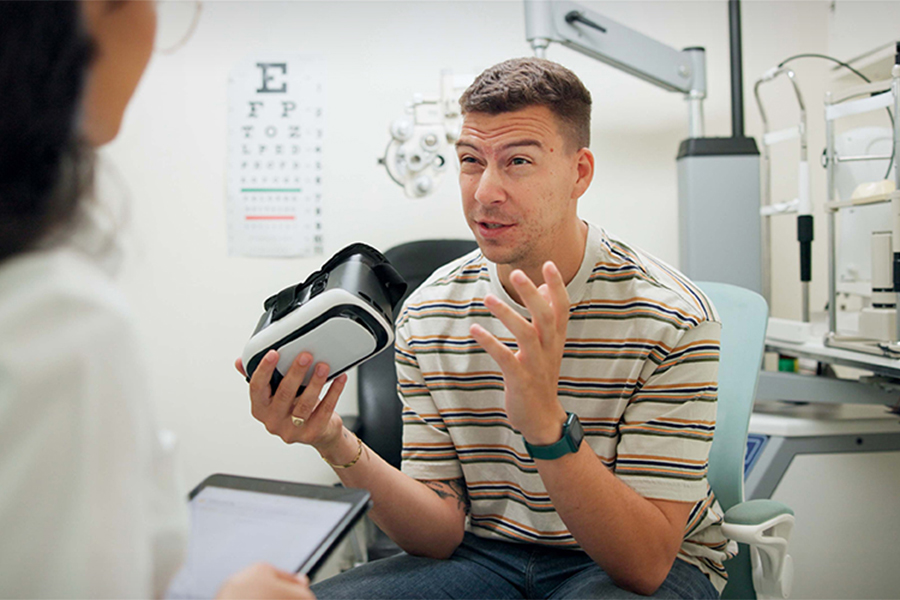
“It often feels like I am always trying to catch up and that the workload is endless…I schedule out my tasks and try to prepare to sleep so I can get four or five hours every night.”
That was one response from eight University of Toronto students who shared their experiences about sleep for a new virtual guide. The sleep health resource was created by Dr. Tatyana Mollayeva, a scientist at UHN’s KITE Research Institute, and research analyst Thaisa Tylinski Sant’Ana.
Published to coincide with World Sleep Day in mid-March, it examines the sleep of post-secondary students and offers suggestions for how they — and others in their lives such as administrators and professors — can improve it.
“I think this will be really valuable not only for students to understand each other’s experiences with sleep, but hopefully to promote wider reflection among administrators and others who are in a position to drive structural change so that students have additional support,” says Thaisa.
The virtual guide was inspired in part by Dr. Mollayeva’s experience teaching a popular course on sleep to University of Toronto (U of T) students.
“That made me realize students really wanted support around their sleep,” she says. “I wanted to use their stories to bring attention to the fact that students’ sleep health is extremely poor.”
To create the booklet, the researchers surveyed eight students and had them rate their sleep using the RU-SATED scale. None scored as having optimal sleep health, with the poorest component being the length of time they sleep, captured in the domain of Duration of RU-SATED.
The students also recognized the impact of inadequate sleep on their performance, saying that it affected their ability to pay attention and focus as well as their energy levels.
‘It’s not only up to students and trainees to make changes’
Urooba Shaikh, a research trainee at KITE through the U of T’s work-study program, was one of the students surveyed.
“Sleep is one of those things that a lot of people talk about, and I know why sleep is important, but when it comes down to it, the question is, how do I make those changes?” Urooba says, adding that the document helped her see how sleep could be improved in tangible ways.
Some recommendations from the guide are for professors to support sleep health by giving students more time and flexibility, such as recording lectures and making them available online.
That’s something that Daniel Phan, another work-study student, says makes sense to him.
“As a commuter, sometimes I find it challenging to get out of bed in the morning to go to a 9 a.m. lecture,” Daniel says. “If I wake up at 6 a.m. to get to the lecture, I’m sleep-deprived.”
Other suggestions include setting deadlines that aren’t too close together during the busiest times of the school year, having time for group work during tutorials, and giving students previously-used midterms as a study resource or a series of practice questions before tests.
“It’s not only up to students and trainees to make changes,” says Dr. Mollayeva. “As a society, we are so focused on performance and achievements, but we need to realize that to be able to accomplish all these things, we need to leave space for students to recuperate.
“Even small structural and organizational changes would be reflected in better sleep, better performance, better achievements, and better health.”

No one ever changed the world on their own but when the bright minds at UHN work together with donors we can redefine the world of health care together.


